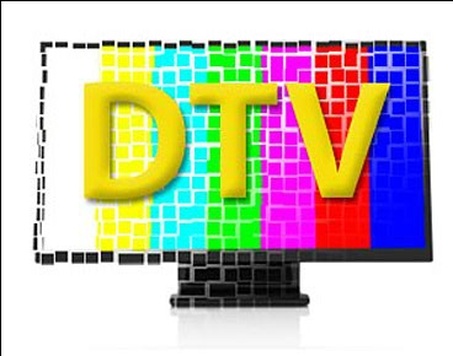|
HOW TO GET BROADCAST DTV (DIGITAL TV):
. There are a couple of questions to ask yourself: . 1. What kind of TV do you have? 2. Where do you live? . If you have a newer TV with a Digital Tuner, then all you need to do is hook it up to an antenna and your done. The antenna will screw into your coaxial input on the back of your TV just like your cable/satellite was attached. You will know that your TV has a Digital Tuner if it has the DTV Logo or ATSC Certified Logo. You can also look in your TV’s user manual, or do a quick search online for your TV Model. . If your TV is not DTV ready, then you will need an analog to digital converter box. One converter box that we recommend is Digital Stream (http://www.dsconverter.com) and can be found at Radio Shack. These typically run about $60, depending on the manufacturer and the electronic store you purchase it from. Once you unpack the converter box you have two different options on how to plug it into your TV. The coaxial cable is the best bet, but you can also use RCA (the red, yellow, and white cables). You will go from the converter box Out to your TV’s In. . Now, let’s discuss where you live. In the WANN coverage map you can determine if you are inside our broadcasting area**. For all other channels the coverage can vary depending on that station’s coverage. You will have to have either an indoor or outdoor antenna to receive different station’s signal ***. Think of downtown Atlanta as the bulls-eye on a dartboard and each circle moving out determines the antenna’s range that you will need to receive the maximum amount of channels. DTV antennas are not like the old days where you have to adjust them to get a clear picture. With the new Digital signal you either get the channel in crystal clear quality or not at all. It’s that easy. Now, if you live near the center of the bulls-eye (near downtown Atlanta) then an indoor antenna will work for your TV. As a general rule, the further out you live from downtown the better antenna you will need, and an outside antenna is always going to ensure more channels. There are many different styles, some even look like satellite dishes, and the information on the box will let you know up to how many miles the antenna is good for. For more information on antenna’s please click on the link below: . http://www.winegarddirect.com/ . Last, for the use of outdoor antennas, you will need to get an in-line antenna amplifier. Most indoor antennas already have an amplifier. Amplifiers for outdoor antennas can be found at your local electronics store and are simply plugged into the antenna’s cable before it plugs into your converter box. If you have multiple TV’s in your home, then an outdoor antenna is also ideal because you can split the antenna signal to each TV (just like before with cable). . |
Once your antenna is set up either outside (pointed towards downtown Atlanta) or in your home, it needs to be plugged into the TV’s In for newer TVs, or the converter box’s In for older TVs. If you are using a converter box- the next cable goes from the converter box’s Out to the TV’s In. If you are using a VCR or DVR then the cable will go from the converter box’s Out to the VCR/DVR’s In. Then the VCR/DVR will be connected from the VCR/DVR Out to the TV’s In.
. When you turn on the converter box for the first time, there is a set up menu where you will scan for all the channels it is receiving clearly. Again, it depends on your location, but most homes find they can receive over 50 channels. Channels are getting updated constantly, so it is always good to rescan frequently (about once a week) so you can see more and more updates and additions. . If you would like to watch a great video that shows all the information above, please see the link below from PBS. It shows a lot about what changed when TV stations switched to Digital TV, and it also goes through many different TV set up situations: . http://www.pbs.org/digitaltv/watch_online.php . *Some access restrictions and blackout games apply depending on location. See ESPN3.com for further details. . **If you are inside the coverage area and you are not receiving our signal this could be because of geographical surroundings or large structures blocking the signal from our transmitters. . ***Protect your investment and make sure your outside antenna is properly grounded. |

